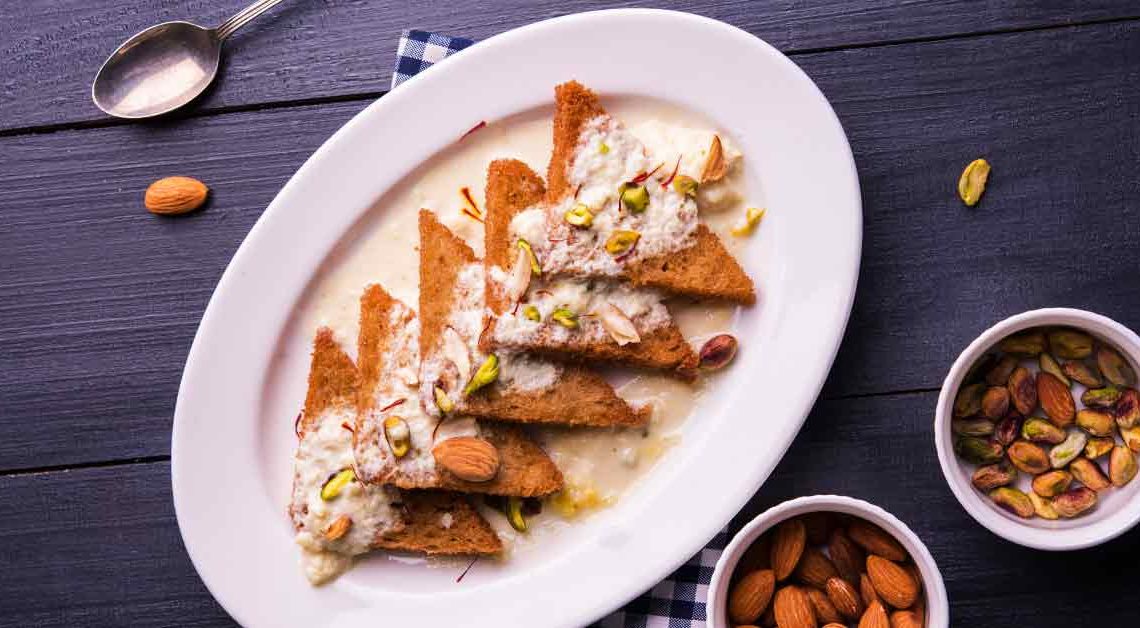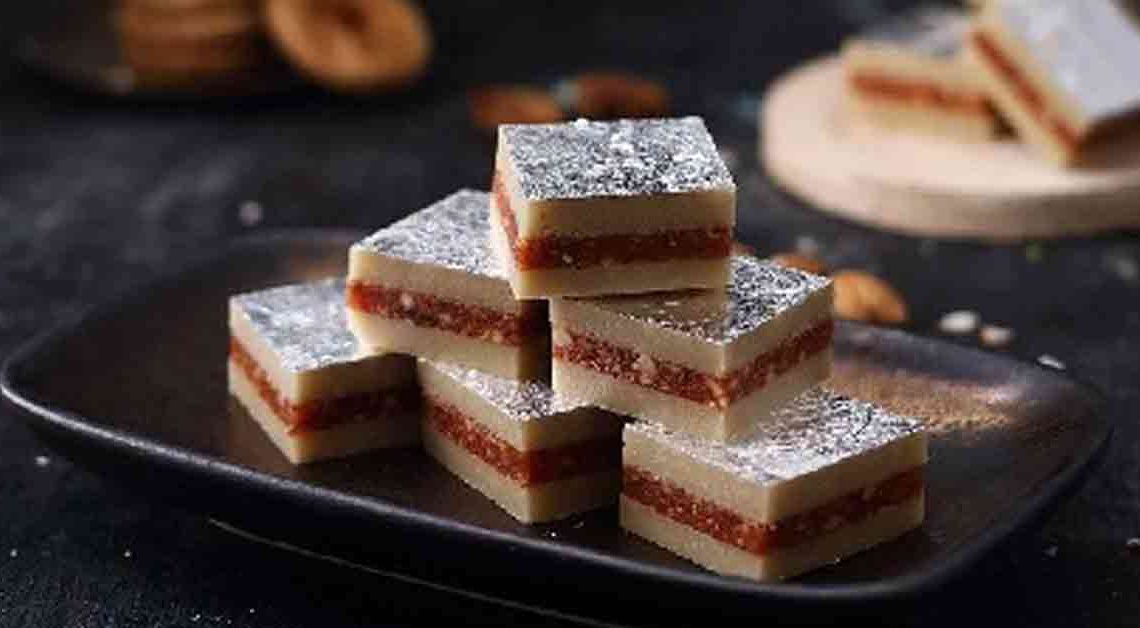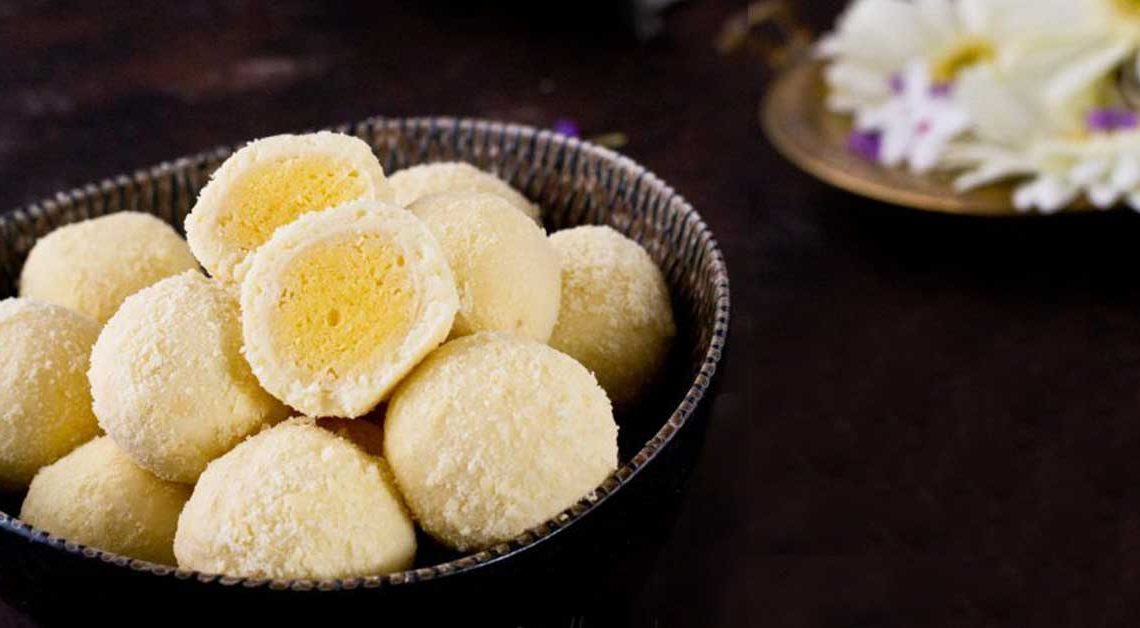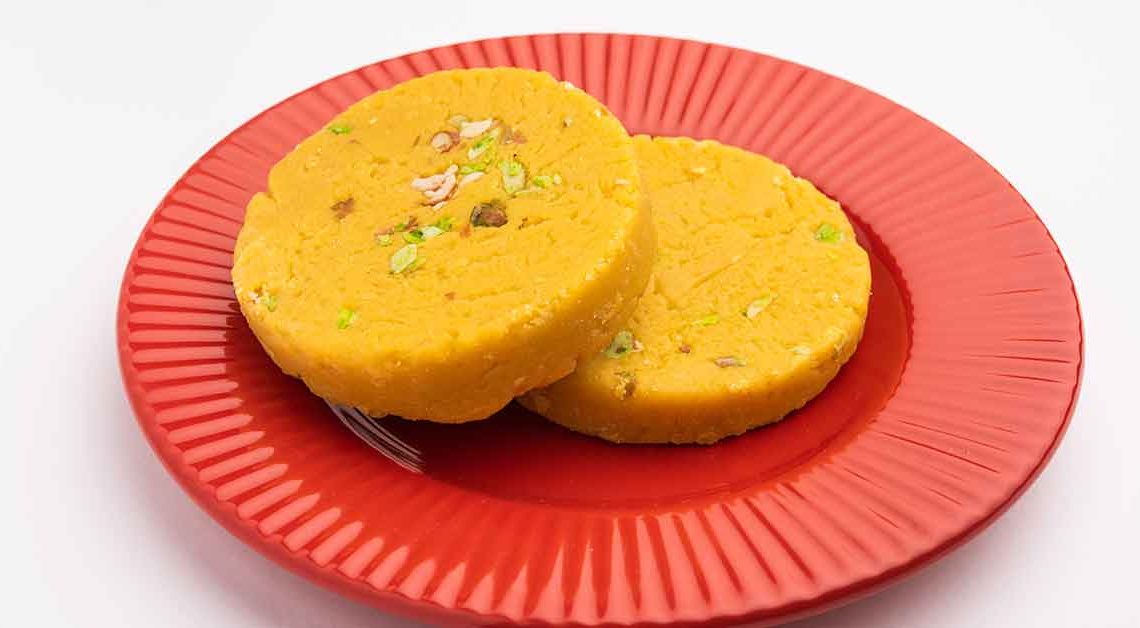Dil Ka Tukda: Shahi Tukda

Get ready to dive into the world of Shahi Tukda with Mithainama! Shahi Tukda, also known as “Double ka Meetha,” is a classic Indian sweet that has captivated taste buds for generations. Its origins can be traced back to the royal kitchens of the Mughal era, where it was created as a decadent treat for emperors and nobles. Today, mughlai dessert continues to be a beloved dessert, cherished for its rich heritage and irresistible taste. It is made with thick milk, condensed milk, bread, ghee, almonds, cashews, and saffron. This delectable dessert is sweet and creamy, and perfect for a special occasion or just a simple treat.
It is a great way to end a meal, and is sure to satisfy the taste buds of anyone lucky enough to try it. And don’t forget to take a picture and post it on Instagram with the hashtag #shahitukdaexperience!
Origin of Shahi Tukda
The origin of dessert can be traced back to the Mughal era in the Indian subcontinent. It is believed that this delectable dessert was created in the royal kitchens of the Mughal emperors, where it earned its name “Shahi,” meaning “royal” in Urdu.
During the reign of the Mughals, rich and indulgent dishes were a hallmark of their culinary traditions. It was born out of this opulence, combining elements of Persian and Indian cuisine to create a dessert fit for royalty.
The dish typically consists of slices of bread that are deep-fried or toasted to golden perfection. These bread slices are then soaked in a fragrant sugar syrup infused with cardamom, saffron, and rose water, imparting a heavenly aroma and flavor. To enhance its richness, the bread is often topped with a luscious layer of thickened milk called rabri, garnished with chopped nuts like almonds and pistachios.
Today, it continues to delight dessert enthusiasts, preserving its royal legacy and enchanting flavors that have stood the test of time.
History of Shahi Tukda
The history of Shahi Tukda dates back to the Mughal era in the Indian subcontinent. It is believed that this delectable dessert was created in the royal kitchens of the Mughal emperors, where it earned its reputation as a regal indulgence.
During the reign of the Mughals, food was considered an important aspect of their opulent lifestyle. The Mughal emperors and nobles had a deep appreciation for rich, aromatic, and indulgent dishes.
The dish typically starts with slices of bread, which are either deep-fried in ghee (clarified butter) or toasted to a crisp. The fried or toasted bread slices are then soaked in a luscious sugar syrup, infused with fragrant ingredients such as cardamom, saffron, and rose water. This soaking process imparts a delightful sweetness and aromatic essence to the bread.
To elevate its richness, it is often topped with a layer of thickened milk called rabri. Rabri is made by simmering milk for an extended period until it thickens and develops a creamy texture. The final touch includes garnishing the dessert with slivered almonds, pistachios, and sometimes even edible silver or gold foil, adding a touch of visual grandeur.
Cultural Significance
Shahi Tukda holds cultural significance as a cherished dessert in the culinary traditions of the Indian subcontinent. Its cultural importance can be understood through the following aspects:
Royal Heritage: It is deeply rooted in the royal heritage of the Mughal era. It was created in the royal kitchens and served as a delicacy to emperors and nobles. As such, it carries a sense of grandeur and prestige, symbolizing the luxurious lifestyle of the Mughal rulers.
Festive Celebrations: It has become synonymous with celebrations and special occasions. It is often prepared and served during festivals like Eid, Diwali, and weddings. Its presence on the festive table adds a touch of tradition and joy, making it an integral part of cultural festivities.
Culinary Diversity: It reflects the culinary diversity of the Indian subcontinent. It combines elements of Persian and Indian cuisine, showcasing the amalgamation of flavors and techniques that have shaped the region’s gastronomic landscape.
Where is Shahi Tukda Famous?
It is famous and widely enjoyed in various regions across the Indian subcontinent. It is particularly popular in the following areas:
Northern India: It has its roots in the Mughal cuisine, which flourished in northern India. It is especially famous in states like Uttar Pradesh, Delhi, Rajasthan, Punjab, and Haryana. These regions have a rich culinary heritage and a deep appreciation for royal Mughlai dishes.
Hyderabad: In the southern region of India, particularly in Hyderabad, holds a special place. The city is known for its rich Nizami cuisine, influenced by the royal Nawabi traditions. It is a popular dessert served during weddings, festivals, and other celebratory occasions in Hyderabad.
Pakistan: It is also well-known and enjoyed in various parts of Pakistan, particularly in Punjab and Karachi. The dessert is prepared and relished during festivals, weddings, and family gatherings, reflecting the shared cultural heritage between India and Pakistan.
Interesting Facts and Trivia
Certainly! Here are some interesting facts and trivia related to Shahi Tukda:
- As its name suggests, it was originally created as a royal dessert in the Mughal courts. It was considered a delicacy fit for emperors and nobles, hence the term “Shahi,” meaning “royal” in Urdu.
- The Mughals were known for their love of rich, flavorful dishes, and is a prime example of their culinary indulgence. It showcases the fusion of Persian and Indian flavors and techniques, reflecting the cultural exchange that took place during the Mughal era.
- While this royal dessert is the popular name in North India, it is also known as “Double Ka Meetha” in some regions of South India, particularly in Hyderabad. The name refers to the process of toasting the bread slices twice to achieve a crisp texture.
- Mughlai dessert shares similarities with bread pudding, a popular dessert in Western cuisines. Both desserts involve using bread as a key ingredient, soaking it in a sweet syrup or custard, and often served with a creamy topping.
- One of the distinctive features is the soaking process. The fried or toasted bread slices are immersed in a fragrant syrup made with sugar, cardamom, saffron, and rose water. This soaking infuses the bread with a sweet and aromatic essence, creating a moist and flavorful dessert.
Did You Know?
Did you know that Shahi Tukda, besides being a delicious dessert, offers some surprising benefits when consumed in moderation?
Nutrient Boost: It contains essential nutrients like carbohydrates, proteins, and fats from bread and milk. These provide energy, support muscle growth, and aid in the body’s overall functioning.
Saffron’s Health Benefits: Saffron, commonly used in the syrup of Shahi Tukda, has been associated with numerous health benefits. It possesses antioxidant properties, promotes mood regulation, and may aid in digestion and improving overall well-being.
Nourishing Ingredients: The dessert incorporates ingredients like almonds and pistachios, which are excellent sources of healthy fats, fiber, and essential vitamins and minerals. They contribute to heart health, brain function, and may help maintain healthy blood sugar levels.
Hydration through Rabri: The creamy rabri topping is primarily made from milk. Milk is hydrating and contains important nutrients like calcium, vitamin D, and protein, which contribute to strong bones and teeth.







